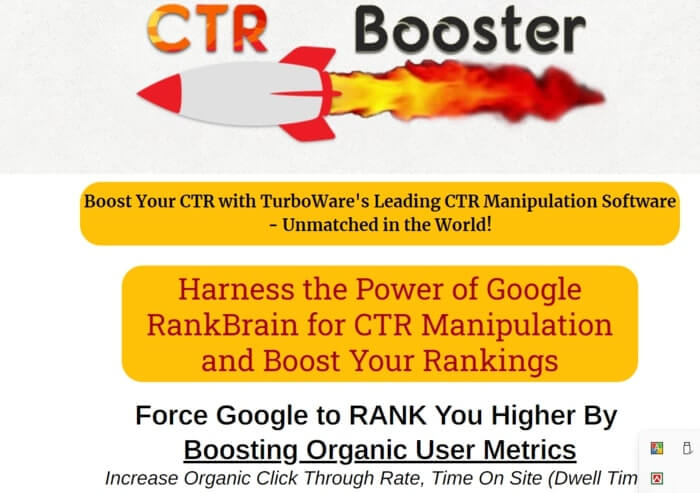Attain Impressive Results with Our Custom-made CTR Manipulation Service
Attain Impressive Results with Our Custom-made CTR Manipulation Service
Blog Article
Obtain More Clicks on Your Site With CTR Manipulation
In today's competitive electronic landscape, grasping click-through price (CTR) manipulation stands as a critical method for boosting site performance. By integrating emotional triggers, maximizing style elements, and carrying out A/B screening, companies can significantly enhance individual involvement.
Understanding CTR Fundamentals
When it comes to on-line advertising and marketing, understanding Click-Through Rate (CTR) is crucial for any kind of website proprietor looking to maximize their digital existence. CTR is a critical metric that indicates the performance of on the internet advertising and material techniques.
A higher CTR typically represents that the web content is relevant and appealing to the target audience, leading to enhanced web traffic and possible conversions. Conversely, a reduced CTR might indicate that the material falls short to engage users or that the audience is misaligned. Web site owners need to frequently check their CTR to assess the efficiency of various electronic projects, consisting of email advertising and marketing, social media, and pay-per-click advertising and marketing.
Fundamentally, recognizing CTR essentials prepares for more sophisticated methods aimed at improving involvement and driving actionable results. By concentrating on this statistics, site proprietors can make informed decisions that improve their general digital marketing initiatives.
Emotional Triggers for Engagement
Numerous marketing experts identify that psychological triggers play a crucial duty in driving individual involvement and affecting click-through prices. Comprehending these triggers can substantially improve a website's performance in drawing in and maintaining visitors.
One of one of the most effective mental principles is the idea of deficiency. When customers view that an offer is restricted in time or quantity, they are most likely to act swiftly, fearing they might lose out. An additional effective trigger is social evidence; showcasing testimonials, evaluations, or user-generated content can build trust fund and urge clicks by showing that others have actually found value in the web content or item.
In addition, the principle of reciprocity can be utilized to cultivate involvement. By giving useful resources, such as informative electronic books or complimentary trials, marketing professionals can create a sense of obligation in customers, prompting them to return the support by clicking with.
Design Approaches for Greater Clicks
Executing effective style techniques is critical for improving click-through rates on internet sites. The visual power structure of a web page plays a significant function; ensuring that key aspects, such as calls-to-action (CTAs), are prominently shown can guide individuals towards wanted actions. Using contrasting shades for CTAs against the web page background can boost visibility and motivate clicks.
Furthermore, integrating white room efficiently permits material to take a breath, making it more digestible and aiding to draw interest to important aspects. Receptive design is likewise crucial; as users significantly gain access to web sites via various gadgets, ensuring your website adapts perfectly improves individual experience and involvement.
Typography should not be neglected, as proper dimensions and legible fonts contribute to an expert appearance and help with simple navigating - CTR Manipulation Service. Additionally, utilizing appealing visuals, such as high-grade photos or video clips, can record user rate of interest and convey your message better
Finally, utilizing concise and action-oriented language in links and buttons can significantly affect individual habits. By tactically integrating these design elements, websites can create an inviting and instinctive atmosphere that promotes higher click-through prices, inevitably causing boosted conversions and user interaction.
A/B Evaluating for Optimization
A/B screening works as a powerful device for maximizing web site performance by allowing marketers to compare 2 variations of a web page to establish which one drives greater check this engagement and conversions. This approach includes randomly offering two variants-- Version A and Version B-- to various segments of site visitors, enabling a straight contrast based on individual behavior.
To apply A/B testing successfully, it is necessary to specify specific purposes, such as enhancing the click-through price (CTR) on a call-to-action switch or boosting the general conversion price. Marketing professionals must focus on one variable at once, whether it's the layout, picture, or heading, making sure that any observed adjustments in efficiency can be associated to that details modification.
Information collection is pivotal in this process. Utilizing analytics devices, online marketers can track metrics like bounce price, time on web page, and conversion rate for both versions. After an adequate sample dimension has actually been reached, the results can be examined to establish analytical importance.
Incorporating the understandings obtained from A/B testing into site layout not just enhances user experience however additionally cultivates an ongoing cycle of optimization, eventually leading to enhanced interaction and higher conversion prices.
Honest Factors To Consider in CTR Adjustment

Morally sound strategies prioritize openness and credibility. Misleading users with clickbait or false pledges might yield short-term gains however can ultimately cause high bounce rates and customer disillusionment. Brands must think about the long-lasting effects of their strategies on customer relationships and commitment.

Including ethical factors to consider into CTR methods not only promotes a positive brand name photo but likewise cultivates a faithful audience that appreciates genuine material. Inevitably, companies that stress moral practices in CTR adjustment are extra likely to accomplish lasting success in an affordable electronic landscape. Prioritizing user experience and count on will cause much better involvement and, consequently, improved CTR in the future.

Conclusion
In conclusion, boosting click-through prices (CTR) on an internet site necessitates a complex method that includes understanding foundational principles, leveraging emotional triggers, and executing effective layout approaches. Inevitably, a balanced focus on these aspects will produce sustainable renovations a knockout post in website efficiency and individual communication.
In today's competitive digital landscape, mastering click-through rate (CTR) adjustment stands as a crucial technique for boosting site performance.When it comes to on the internet marketing, recognizing Click-Through Price (CTR) is necessary for any type of site owner looking to optimize their digital existence. Conversely, a reduced CTR might indicate that the web content stops working to involve individuals or that the audience is misaligned. Focusing on user experience and trust will certainly lead to much better engagement and, subsequently, boosted CTR in the long run.
In conclusion, boosting click-through prices (CTR) on a website requires a multifaceted approach that includes understanding fundamental concepts, leveraging psychological triggers, and applying effective style techniques.
Report this page